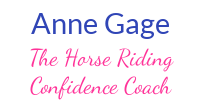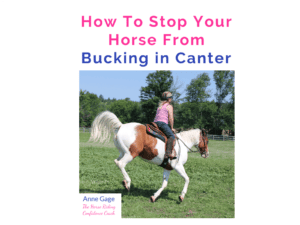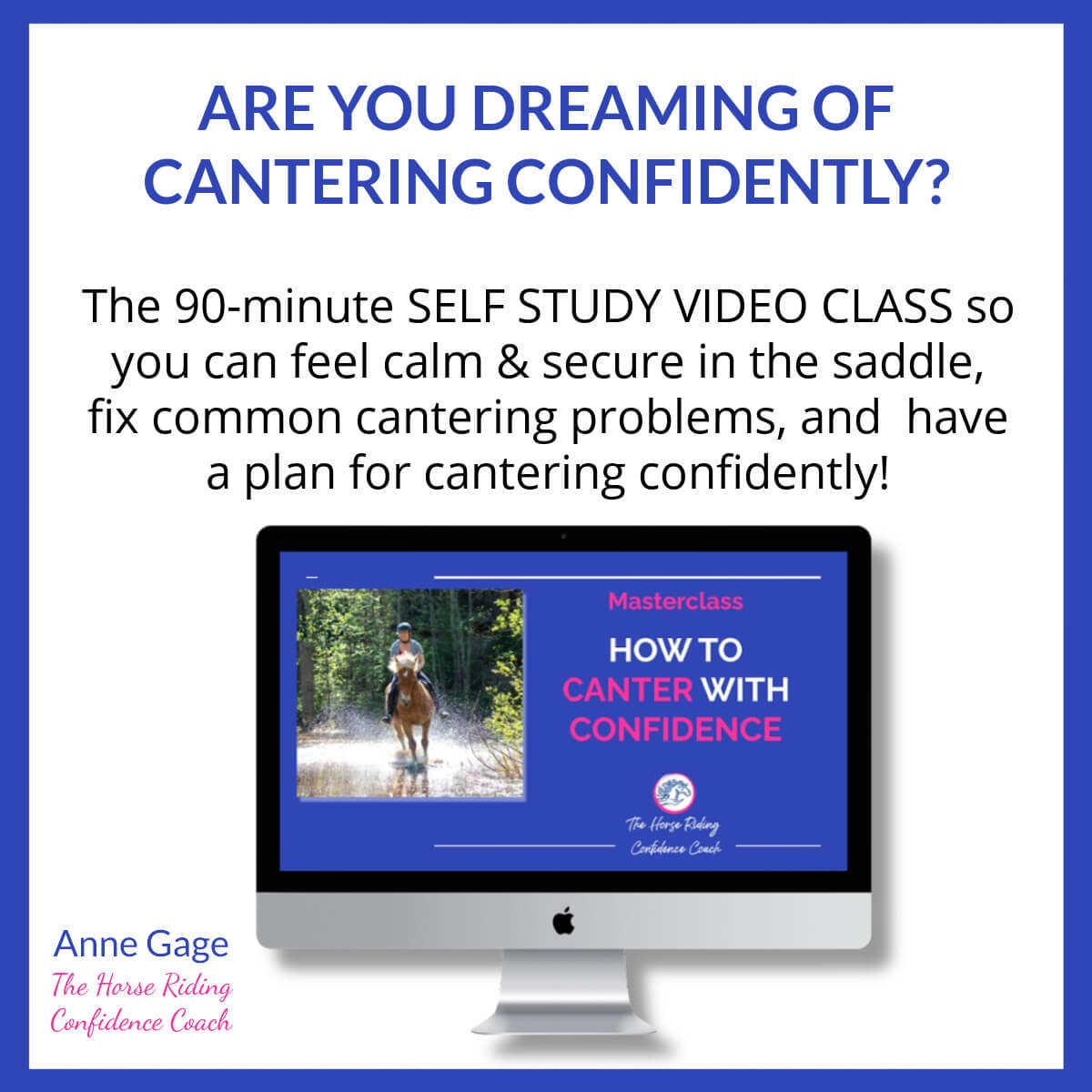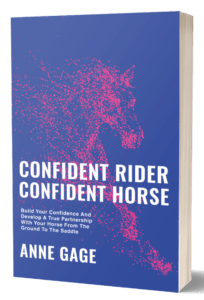Has your horse suddenly started bucking in canter? Or maybe bucking into the canter is something he has always done.
Riding a bucking horse is an unsettling - even frightening - experience that can lead to a vicious cycle of tension for both you and your horse. A cycle that takes all the joy out of riding! Read this article to find out what to do to stop your horse from bucking...
If your horse’s bucking is a new behaviour then your first step is to figure out what has changed. Consider your horse’s environment, health, feed, management as well as your tack fit and how you’re riding.
Tip: There’s no point in addressing a horse’s bucking behaviour until you’ve found the root cause.
What Happens When A Horse Bucks?
There are different forms and strengths of bucking. Not all bucks are like the ones you see at rodeos where the horse drops his head, arches his back and springs off the ground with all 4 feet. And even twists his body in mid-air whilst snorting and roaring.
Your bucking horse may simply plant his front feet and give a small (or big) backward kick with his hind legs.
He might only give one or two bucks. Or several bucks in a row.
Bucking can happen while the horse is stationary, walking, in the middle of a canter, or landing after a jump.
Crow hopping is considered a milder form of bucking. In this style of bucking, the horse arches his back and takes short, stiff hops. All four legs do come off the ground, but not very far. With some horses, the back legs barely clear the ground at all.
When a horse is crow hopping, all four legs hand down straight. So, he is not kicking out behind at all.
Although crow hopping is not considered a “hard” buck, it can still be dangerous and challenging to ride.
Reasons Horses Buck
Bucking is a natural behavior for horses. While you’ll see horses bucking when they “feel good” and when playing, it’s mostly a fear or defensive behavior designed to get rid of a predator or other threat to the horse’s safety.
Myth Buster: You might have been told that your horse bucks because he doesn’t respect you. Bucking is a natural behaviour used for the horse’s safety.
The truth is that bucking in horses happens when they can’t escape from a threat, something scary or something causing discomfort.
Pain and fear are the two biggest causes of bucking in horses.
Another cause of bucking in horses is miscommunication because it’s a major cause of confusion and anxiety for horses. The timing and strength of your aids impact your horse’s behaviour.
Examples of poorly timed aids include: asking your horse to go forward, but not releasing the rein to allow him to do so; not releasing over a jump, and landing on your horse’s back after a jump.
Improper and unbalanced training can also contribute to the problem. For example, asking your horse for the left canter lead when he doesn’t have a left bend can lead to confusion, imbalance and evasion.
Bucking in Horses Can Become A Learned Behaviour
A horse bucking once is disconcerting. But it’s not a serious problem. It becomes a problem behaviour if it becomes persistent, frequent or happens easily.
And a horse bucking can become a learned behaviour. If a few isolated incidents of your horse bucking end with you coming off or stopping the riding session, the principles of negative reinforcement apply.
Tip: Negative reinforcement happens with an aversive stimulus (something unwanted or unpleasant) goes away (is removed) after a specific behaviour happens. Pressure and release is a form of negative reinforcement.
It’s in this way that the horse learns that bucking allows him to avoid an activity he’d really rather not take part in (again - because of fear, pain or confusion).
A horse might learn to buck as a way to escape the discomfort of constantly applied aids, the confusion caused by mixed signals and pressure not being released appropriately (when pressure and release training is being used).
A horse might even develop a negative association between pain and being ridden. So, it’s possible for a horse to continue bucking long after the training or physical problems have been resolved.
The good news is that horses who have learned to buck can be retrained. However, you need to look deeply into the underlying cause behind the bucking in the horse... and resolve them.
Resolving Bucking in Horses
Get To The Root Cause
First and foremost, you need to rule out any possible physical pain or discomfort that could be the contributing cause to a horse bucking.
- Muscular pain (particularly in the back, neck or hindquarters)
- Joint (skeletal) pain
- Dental pain
- Internal issues (including ulcers)
- Saddle fit
Other possible causes of pain include: bit fit, dental issues (teeth, tongue, palate, jaw, temporomandibular or TMJ joint disorder), poll, neck, pelvis, kissing spine, pinched or damaged nerves causing stabbing or burning sensations.
Tip: Not all pain is visible or causes lameness. It’s worthwhile to have a veterinarian and/or chiropractor examine your horse.
Prevent A Horse From Bucking
Observe Your Horse
Watch your horse when he’s turned out in the paddock or loose in an arena. Notice how he moves without tack or a rider. How does he behave generally – does he seem relaxed or anxious?
Compare that to how he behaves while being groomed, tacked up, lunged and ridden. Notice where he carries or holds tension in his body. Tightness around the eyes and muzzle, and holding his breath are subtle signs of pain that are often missed. (Want to learn more subtle signs of tension? Click here to download my free infographic.)
A lack of swinging in the neck and through the back, as well as not stepping well underneath his body are also signs of tension.
Rule Out Pain
When there is a sudden unexpected change in behaviour, pain is often the cause. “Investigate all possible sources of pain or discomfort, then take the necessary steps to eliminate it – massage, chiropractor, dental work, changes to saddle fit, bit fit, etc.,
I had a normally quiet horse who suddenly began bucking explosively. Through blood work, it was discovered he had PSSM, a muscle disorder that causes chronic tying up.
Determine the Trigger
Is your horse’s bucking consistent with a certain activity such as a canter transition or after a jump? Or is it random?
Does it happen with every rider or just one? Does it happen when he is lunged or only when ridden?
I have a client whose mare suddenly started bucking when asked to trot. We could find no obvious signs of pain – she’s a very stoic mare – so we had an experienced massage therapist check her over. She determined that the mare was sore in her shoulders and that was likely caused by a problem in her front feet.
Further investigation by the veterinarian confirmed that diagnosis. After the root problem was successfully addressed then the bucking was eliminated.
Go Back to the Basics
Once you’ve eliminated any possible sources of pain or discomfort, it’s time to consider any possible gaps in your horse’s training.
It’s important to fill in these gaps in order to help your horse to be confident and comfortable - mentally as well as physically - with what he is being asked to do.
Laying A Good Foundation
Your horse should be able to travel straight and forward whether you’re riding a straight line, a circle or a bend.
Crookedness causes imbalance. Imbalance causes tension. And tension can lead to a horse bucking.
Start from the ground with leading your horse in-hand. Encourage him to carry himself with the same posture and straightness that he needs to have when he’s being ridden.
Do exercises with your horse that require him to use his hindquarters, engage his core muscles and lift his back. Stepping over poles. Lateral work that includes bending and turning. Walking up and down hills.
Practice keeping your horse’s body aligned - his nose in line with the centre of his chest; hind feet tracking directly behind shoulders (no bulging shoulders or dropping hips).
Being able to control your horse’s body and keep him balanced is important for preventing bucking (and other unwanted behaviours).
It’s difficult to become a bucking horse when he is going forward and in a balanced bend.
Does Your Horse Buck In The Canter?
If the horse bucks at the canter, it’s helpful to focus on small steps. For example:
- Focus only on setting up for the transition without actually going into the canter.
- When your horse is doing that comfortably and without any anticipation or tension then ask for the transition. Going into the canter only if he stays balanced and relaxed.
- Canter only a few strides before coming back to trot or walk.
Remember to praise your horse with a soft word and a wither scratch for a good try or a small step toward what you want him to do. Small gains quickly add up and help your horse feel calm and confident.
Check in To Prevent Your Horse Bucking
Pay attention to every stride your horse takes under saddle. Keep yourself mentally focused in the moment so that you’re aware of what’s happening around you and under you.
The more relaxed you are, the better you’ll be able to notice warning signs and take pre-emptive action to prevent your horse bucking.
Watch for signals such as:
- dropping his head
- Shifting his weight to his front end
- Lack of rhythm
- Lifting back underneath you
- Lack of swing or bracing in the back
Also, pay attention to signs that you may be pushing your horse too fast. He may not be physically or mentally ready for the work you are asking him to do. Make the focus of every training session about keeping your horse balanced, calm and relaxed.
Warm Up To Prevent A Horse Bucking
Walking in-hand, liberty work and lunging are all good activities for you and your horse before riding. These types of groundwork are a good way to manage your horse’s excess energy and allow you to evaluate how your horse is feeling and moving on any given day.
Once you get in the saddle, give your horse a good warm-up at walk for at least 10 minutes - longer in colder weather or for an older horse. A good warmup includes stretching and light lateral work rather than just walking around and around the outside of the arena.
Warm-up exercises should include circles, serpentines, and figures of eight at walk and trot. Ride lots of changes of direction so that you work both sides of your horse’s body.
Also, be sure to give your horse stretching and relaxation breaks throughout the ride.
Work on Yourself
When dealing with a horse bucking, it’s key to keep control of your emotions. Reacting aggressively or abruptly will startle your horse and only add to his fear and tension.
These simple exercises can help you stay calm:
- Before getting in the saddle and whilst riding, scan your body to check where you might be holding tension
- Release tension by breathing deeply from your diaphragm
- Open your peripheral vision. Sally Swift called this riding with “soft eyes”
- Create a short mantra (phrase) you can easily and calmly repeat out loud. “You’re okay”. “We’re okay”. “You’re fine”. “We’re fine”. “It’s all good”.
Take responsibility for your own part in the equation. Riding is a journey, not a destination. There’s always room for improvement in your balance, suppleness, and timing of cues in the saddle.
Remember that your horse’s behaviour (even the behaviours we don’t want - like bucking) are his only way of communicating with you. And most unwanted behaviours happen because of pain, fear or confusion.
The more you listen to your horse, the better your partnership will become.
Enjoy every ride.




0 comments